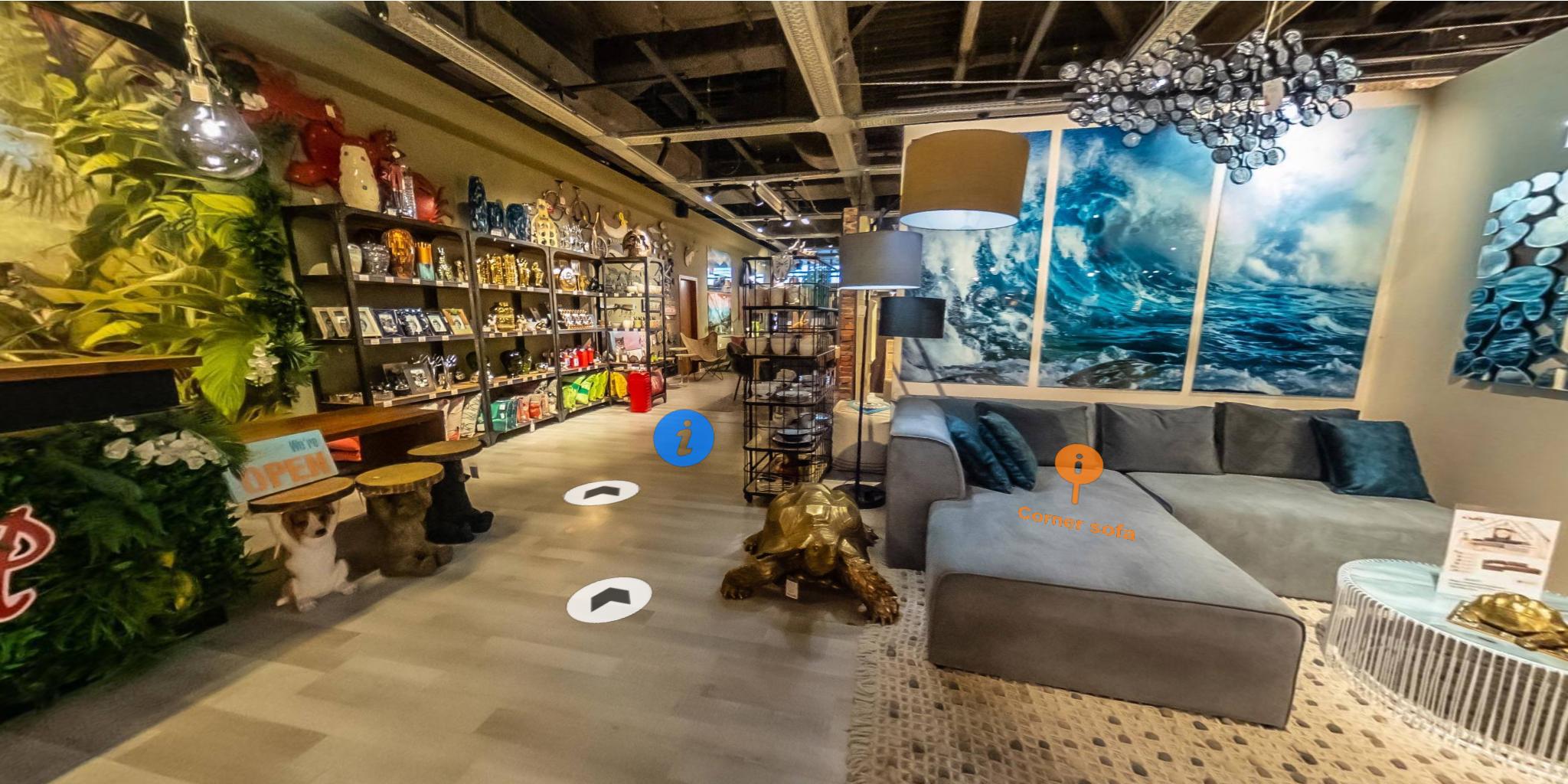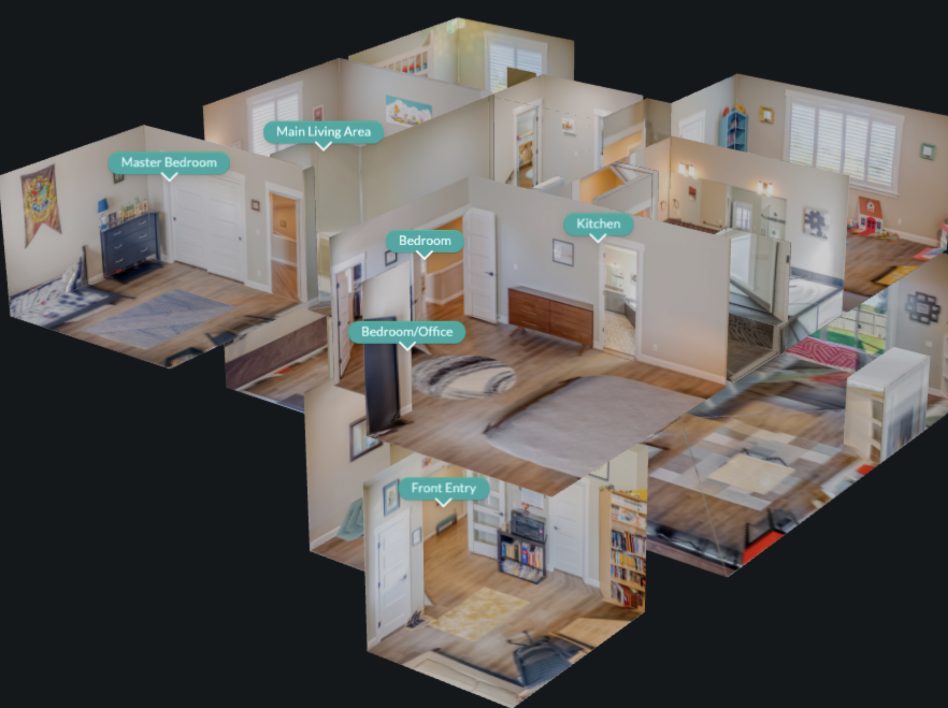
Virtual Tour 360 – what is that?
Virtual Tour 360 is an idea that is already a few years old but is only now starting to make its way more and more into the marketing world and is becoming one of the most popular ways to connect companies with customers and grab their attention. In this article, I’ll introduce you to what Virtual World is and why it’s aimed at your business.
Translate this post automatically by Google Translator:
Virtual Tour 360, 360° tour, panoramic tour, the names are many, and there is a wide range of technological possibilities in the field of “Virtual Tour”. It may seem a bit overwhelming at first glance, but ultimately it gives us the ability to find the right virtual solution for any industry. From stationary stores, to travel agencies, car dealerships, boat rental dealerships, and finally the real estate industry. I want to walk you through some terms and explain the differences and similarities between panoramic tours and 3D tours, and show you when it’s best to bet on which technology. I invite you to continue reading the article.
What is a virtual tour?
A virtual tour allows you to digitally explore places and get a better sense of the space, including through the use of VR googles. The central elements of a virtual tour are the free control of the view, which is usually possible through the use of 360° images, as well as the juxtaposition of several image positions between which the user can move back and forth along a specific path programmed by the creator.
In most virtual tours, additional content can be integrated as clickable information points to turn a digital visit into an interactive virtual tour. This can be text, images, video, booking forms, dynamic content or simply PDF files – for example, if a user sees a flyer lying on a table, they can then click on the information point and download it or view it on their screen. The latest forms of virtual tours are even more advanced and attractive. They feature a photo gallery, background music, gyroscope support and much more.
A virtual tour consists of interconnected 360° panoramic photos taken by a special 360° camera in several directions simultaneously. The photographer does not choose a portion of the image, but the camera’s point of view from which it captures the entire sphere. Then there are various ways to combine the individual 360° photos to create a virtual tour.
For a long time, the term 360° tour was ultimately just another synonym for virtual tour, since the latter, as described above, involves combining dozens of 360° photos. Since 360° photos are also called spherical panoramas, the term panoramic tour has become perpetuated among some developers and users. The term panorama comes from ancient Greek and means something like “all-encompassing view” or, more simply, “panoramic view” and is characterized by covering a large angle of view. However, this can lead to misunderstandings, as panoramic photography is often understood to mean only images covering a wider field of view, but not covering the entire cross-section of a 360-degree image.
The quality of a 360-degree tour depends primarily on the resolution and quality of 360-degree panoramic images, as well as the choice of camera positions at specific points because, after all, these are the points on which you can virtually walk as part of a 360-degree tour, but just look at for yourself:
A 360-degree tour is particularly useful when you want to give the user virtual access to selected areas. Accordingly, various points that provide added value in terms of content are selected in advance, while unnecessary corridors or redundant areas are skipped. The goal when creating a 360-degree tour should be to take as many shots as possible in the best quality. In this way, the user gets a complete picture of the location without getting lost, bored or bouncing off the walls. A 360° degree tour can be just as useful for a virtual tour of a property as it is for a tour of a company, museum or stationary store.
3D tour
A 3D walkthrough (3D tour) is designed to create the fullest possible sense of space. For this purpose, panoramic images are anchored in a 3D model. 3D data can be collected using photogrammetry, laser scanners or infrared sensors. For this purpose, during 360° photography, usually many more recording/measurement points must be taken to create a digital representation of the building. The best points are then selected and can be virtually walked around within the 3D model, thus creating a virtual tour. The following example of a 3D tour shows the difference:
The confusion over the term stems from the fact that 3D tours can include both modeled 3D living rooms based on renders and 3D tours of real objects, although they differ greatly in terms of creation and cost.
A 3D tour works particularly well as a property tour because it is closer to an actual site visit than any other technological solution. Because of its innovative design and seamless operation, the 3D tour is becoming increasingly popular with other target groups as well – from virtual office tours to hotel tours.
Virtual reality (VR) tour
The previously described Virtual Tour 360° or 3D solutions can also be viewed in VR glasses. It becomes a virtual reality tour. As a rule, the preparation for virtual reality is an additional element and has the advantage that the user can thus be completely immersed in the virtual environment, without any external distractions. A 3D tour can be even more immersive because of the stereoscopic images.
Google Street View tour
Google Street View is a platform where 360° images are integrated and displayed as a Google tour in your Google MyBusiness account and Google Maps search engine. This usually provides even greater visibility, as searchers can satisfy their need for information at an early stage. To create a Google Tour, panoramic images can be uploaded and linked directly through the Google Street View application or imported through the interface.
Virtual Tour 360° or video 360° ?
It can be very easy to confuse Virtual Tour 360° with their close relatives – videos 360°. What both have in common is that they consist of spherical panoramas in which the user can look around freely. A 360° tour, however, is based on static photo recordings, while 360° videos are recordings of moving images, as the following example shows:
360° videos can be embedded on YouTube or Facebook, making them increasingly popular, especially in social media marketing. For the presentation of buildings, a 360° video tour is particularly suitable when, in addition to the impression of space, movement is to be captured, for example, of working machinery, or when an employee leads through a virtual tour as a guide and reports something about individual positions.
What are the advantages of a 360° tour?
The advantage of a 360° degree tour is that it is highly effective and interactive. Your potential customers can get a clear picture of the atmosphere and climate of your establishment.
- You gain more new customers, which directly translates into your profits,
- You help potential customers make a decision,
- You provide a better picture to potential customers by customizing the virtual tour individually,
- You avoid unnecessary visits, resulting in more time for yourself or other business duties,
- You gain a technological advantage over your competitors,
- High-quality photos always catch the eye,
- 5 times more time spent on your site which translates into a higher ranking on Google,
- By integrating with Google Maps, you can improve your search engine position and more customers will learn about you,
- Virtual Tour 360° integration on social networks like Facebook, LinkedIn,
- A visitor to your website gets an innovative website design and can navigate through your premises in a fun way,
- Our 360° panoramic images and virtual tours work on all desktops, tablets and mobile devices,
- Greater transparency builds greater customer trust.
Who is the Virtual Tour offer aimed at?
Sky is the limit applies here as well. This solution is most often used by companies in industries such as Real Estate, Hotels & Resorts, Restaurants, Universities, Schools & Colleges, Super shops, Antique shops, Art Galleries, Showrooms, Museums.
The global VR market is estimated to grow to $209.2 billion by 2022. This is 7.7 times the global market in 2018 (data reference: Techjury.net).
Get more bookings with Virtual Tour 360°
Our virtual tours create a unique experience, transparency and trust in your business. Visitors stay longer on your site. Prospects for more bookings and better ratings increase significantly. Additionally, your establishment stands out from the competition and positions itself as an innovative, trustworthy and customer-friendly business.
360° tours are an effective marketing tool with an eye-catching effect, which is particularly effective in attracting new customers and is the primary advantage of a 360° virtual tour.
Why create a virtual tour?
A photo is good, but a professionally taken photo is even better. But you only get real added value with a virtual tour. Thanks to Web 2.0 technology, Internet users are used to interacting on websites and, in fact, expect this from any service provider.
Missing information or impressions raise questions. With a virtual tour, your potential customer is no longer a passive observer, but an active explorer! With this exclusive and interactive communication tool, the identification of your target audience with your company increases. This leads to every potential customer directing their interests to your tour. Take advantage of the benefits of a 360° tour and get more customers and thus more sales for your company.
If you have questions then just contact us.
You will be amazed at how your company can look beautiful.
In my next article I will present the 7 best uses for Virtual Tour 360° Also sign up for the newsletter to stay up to date.




